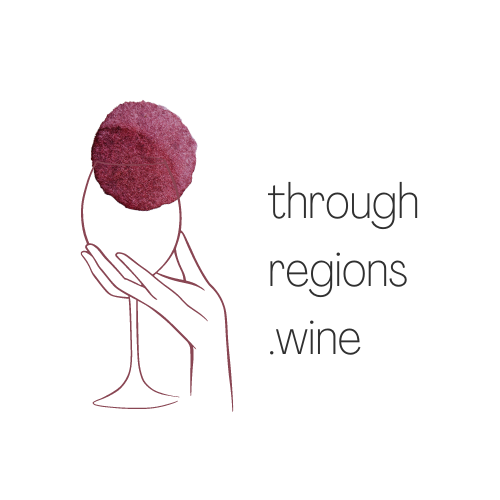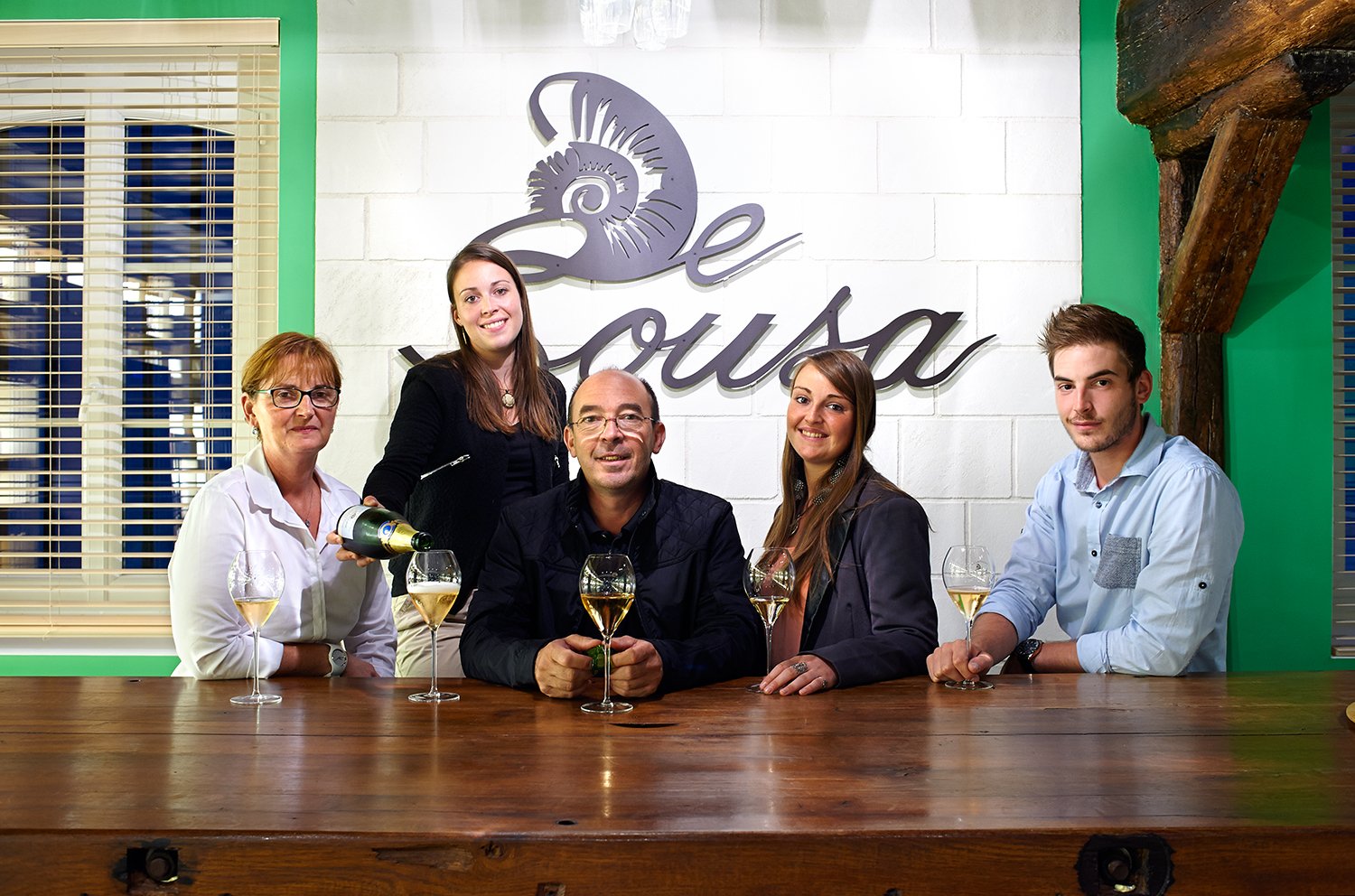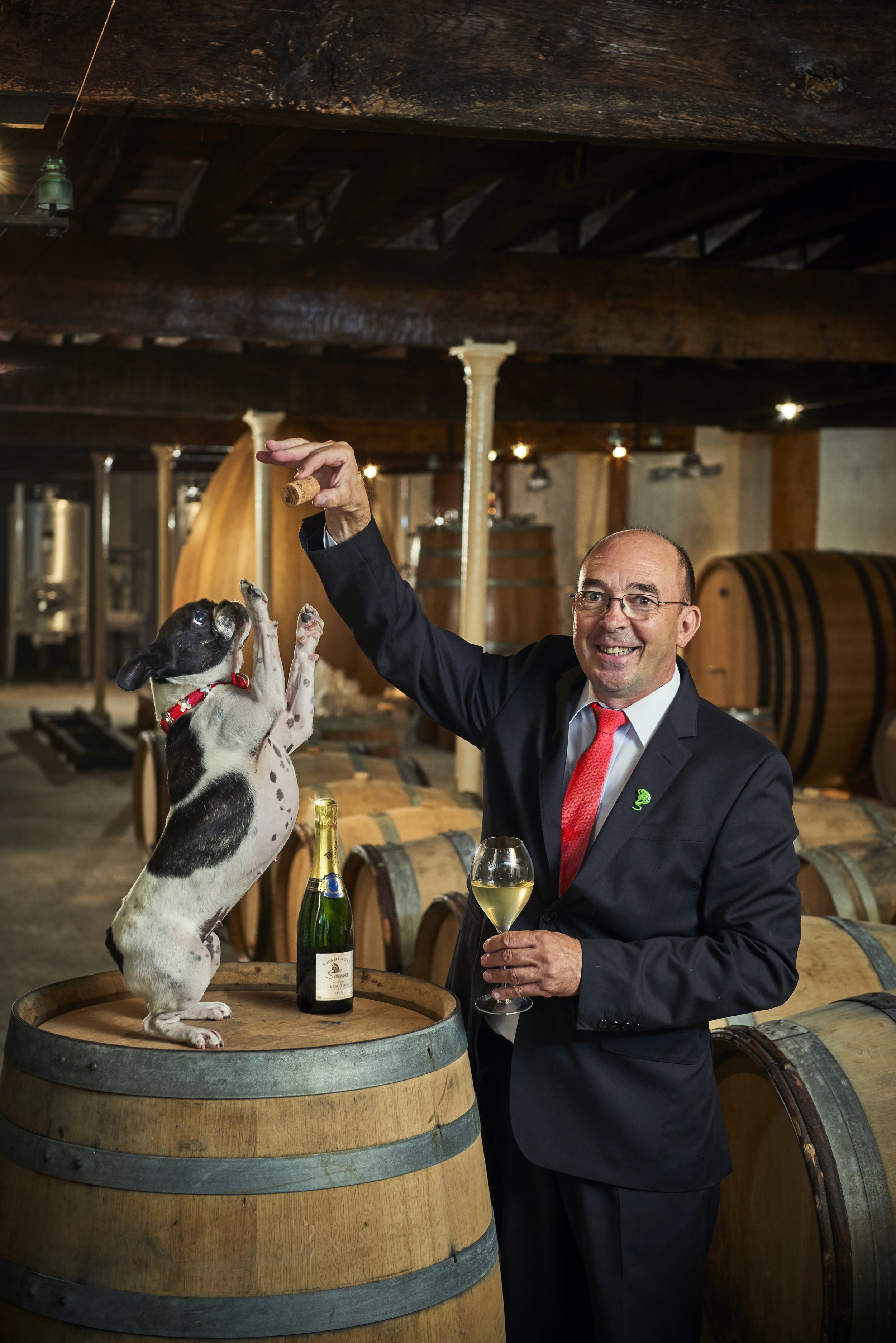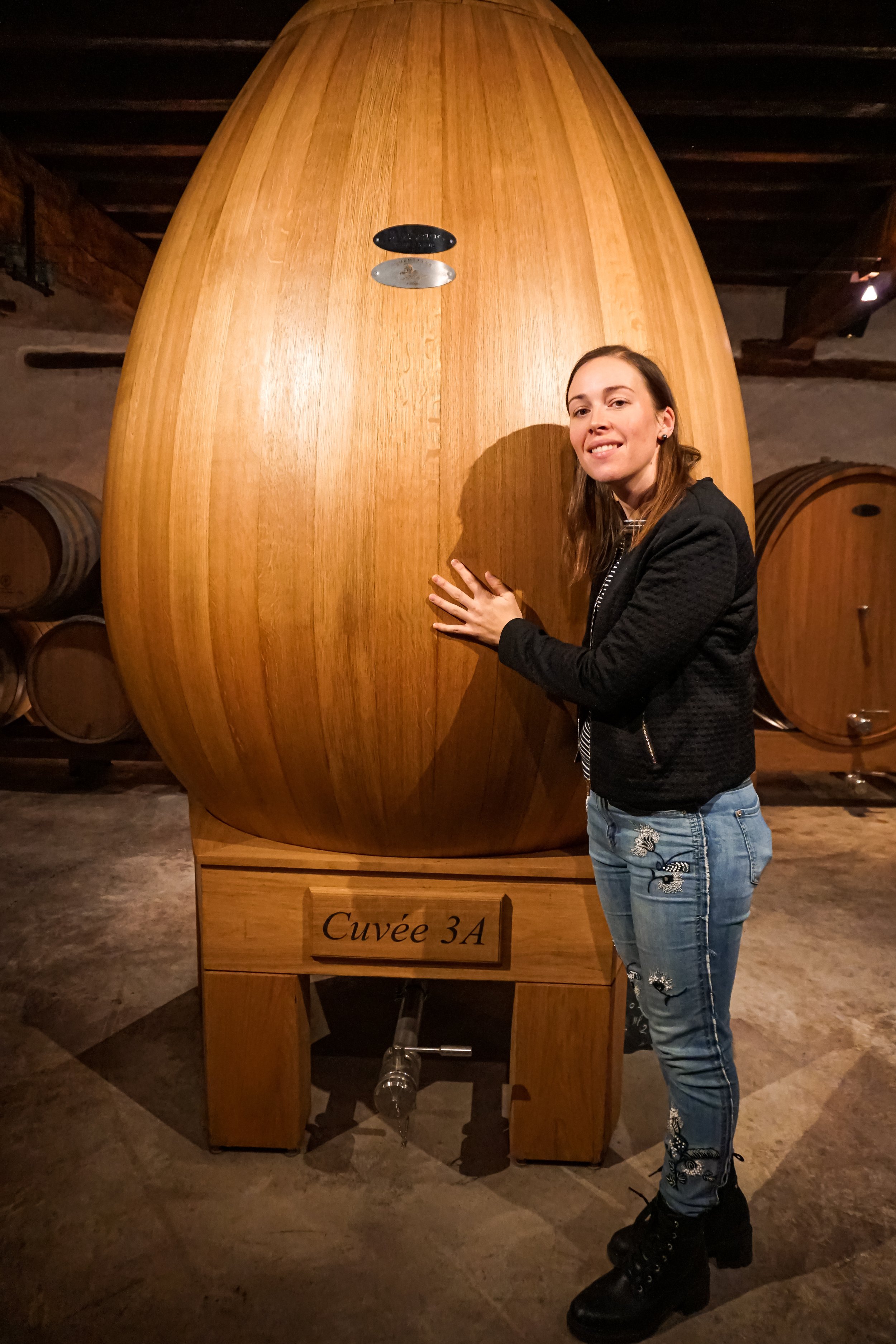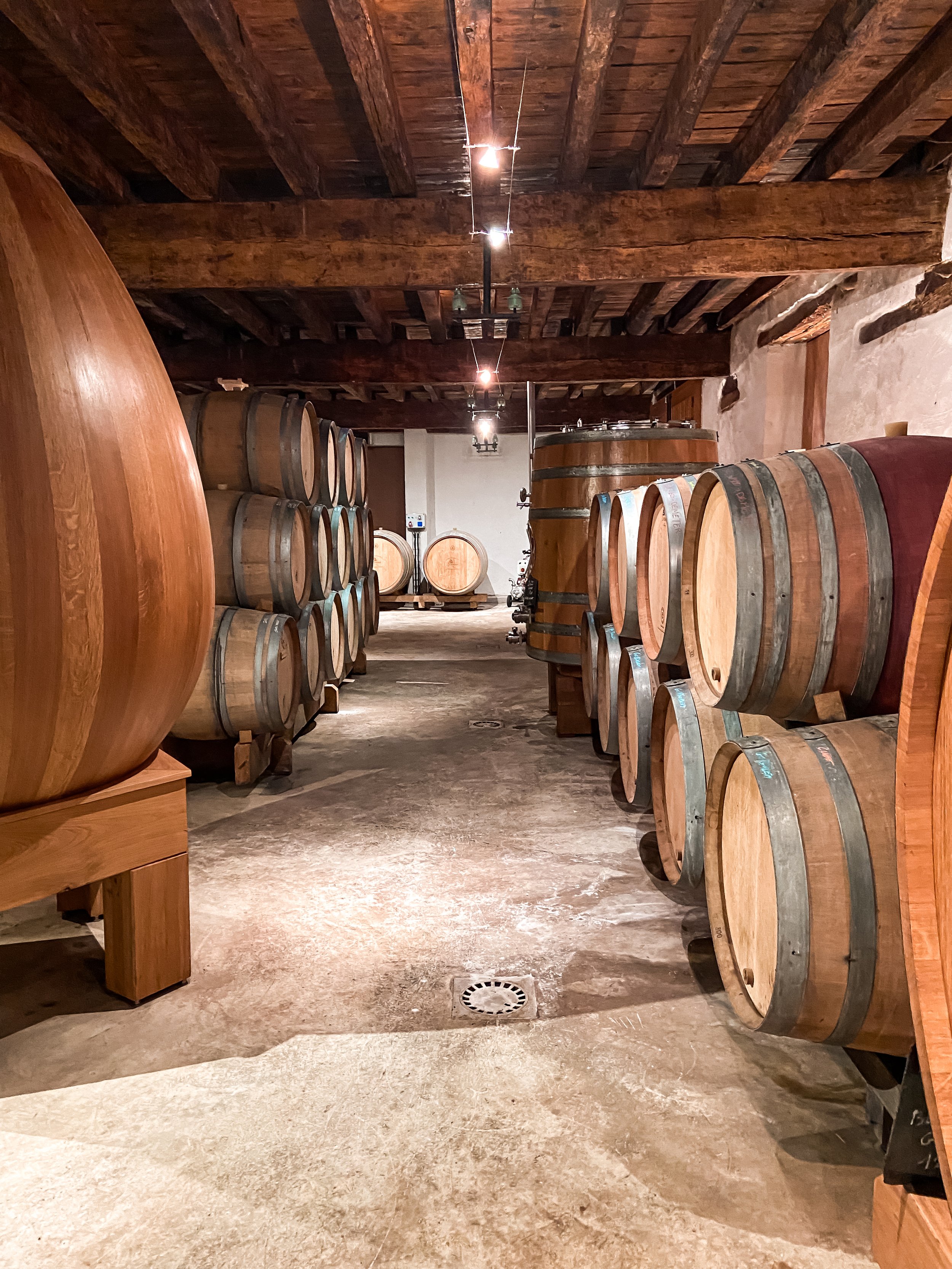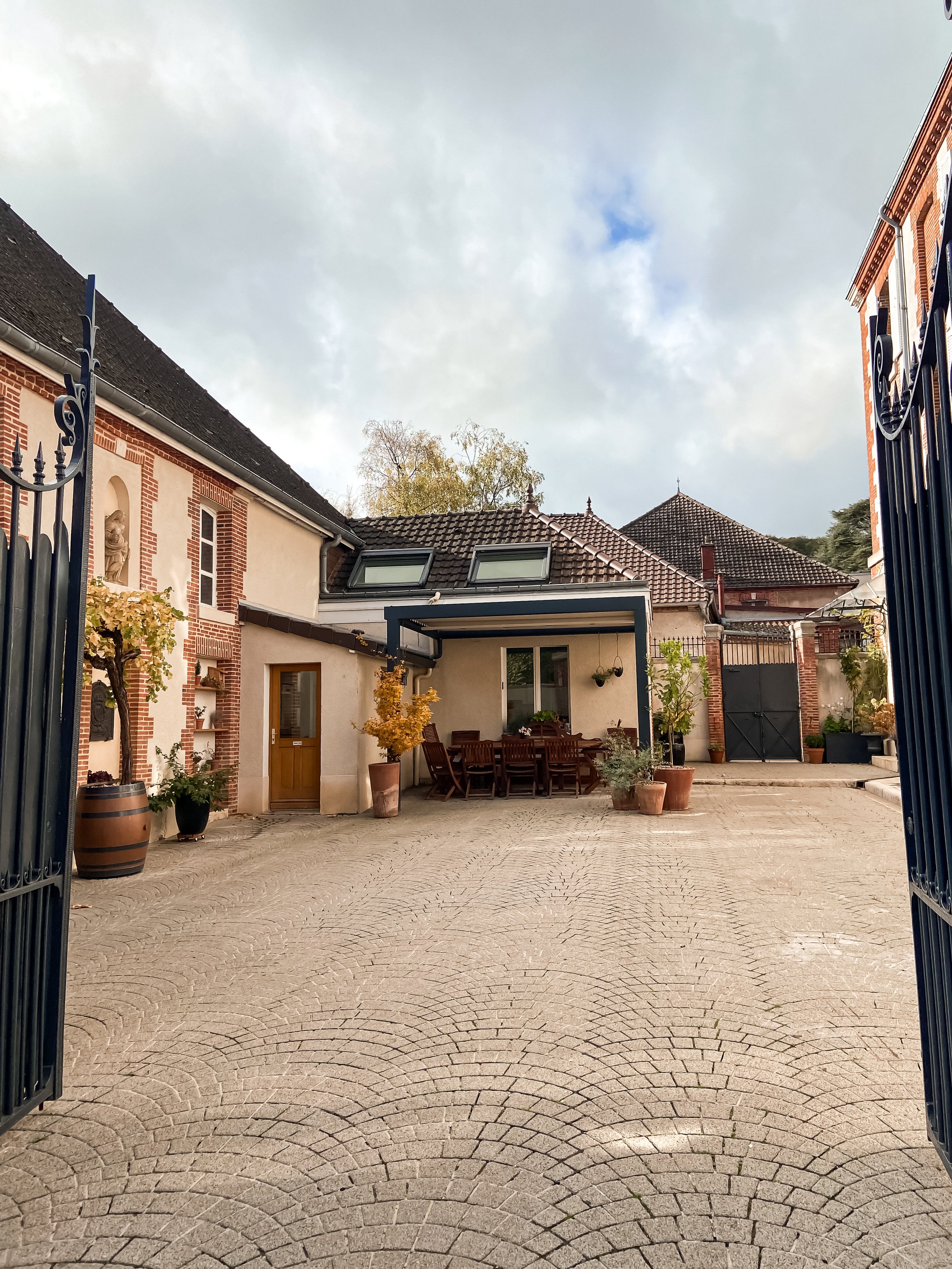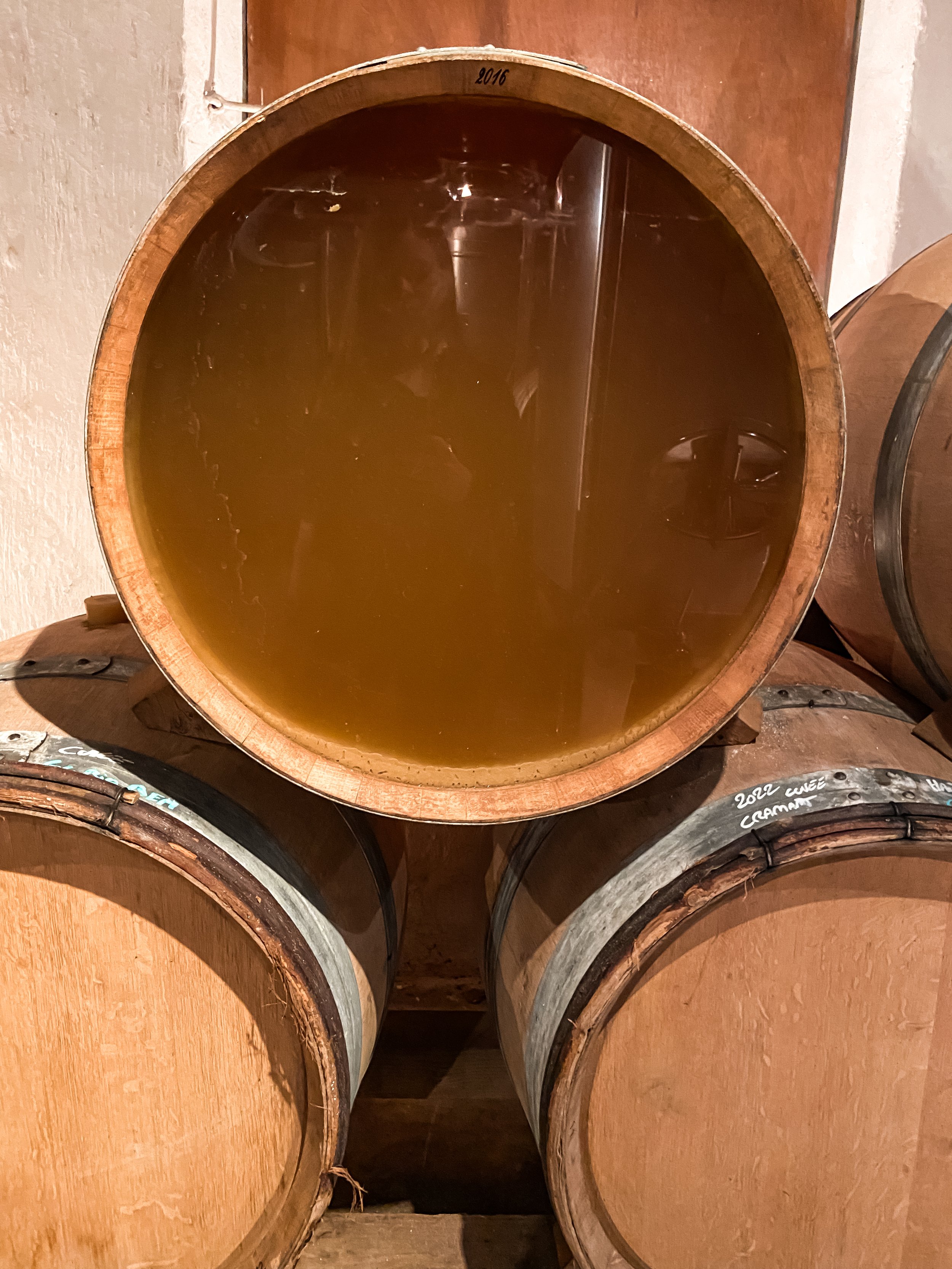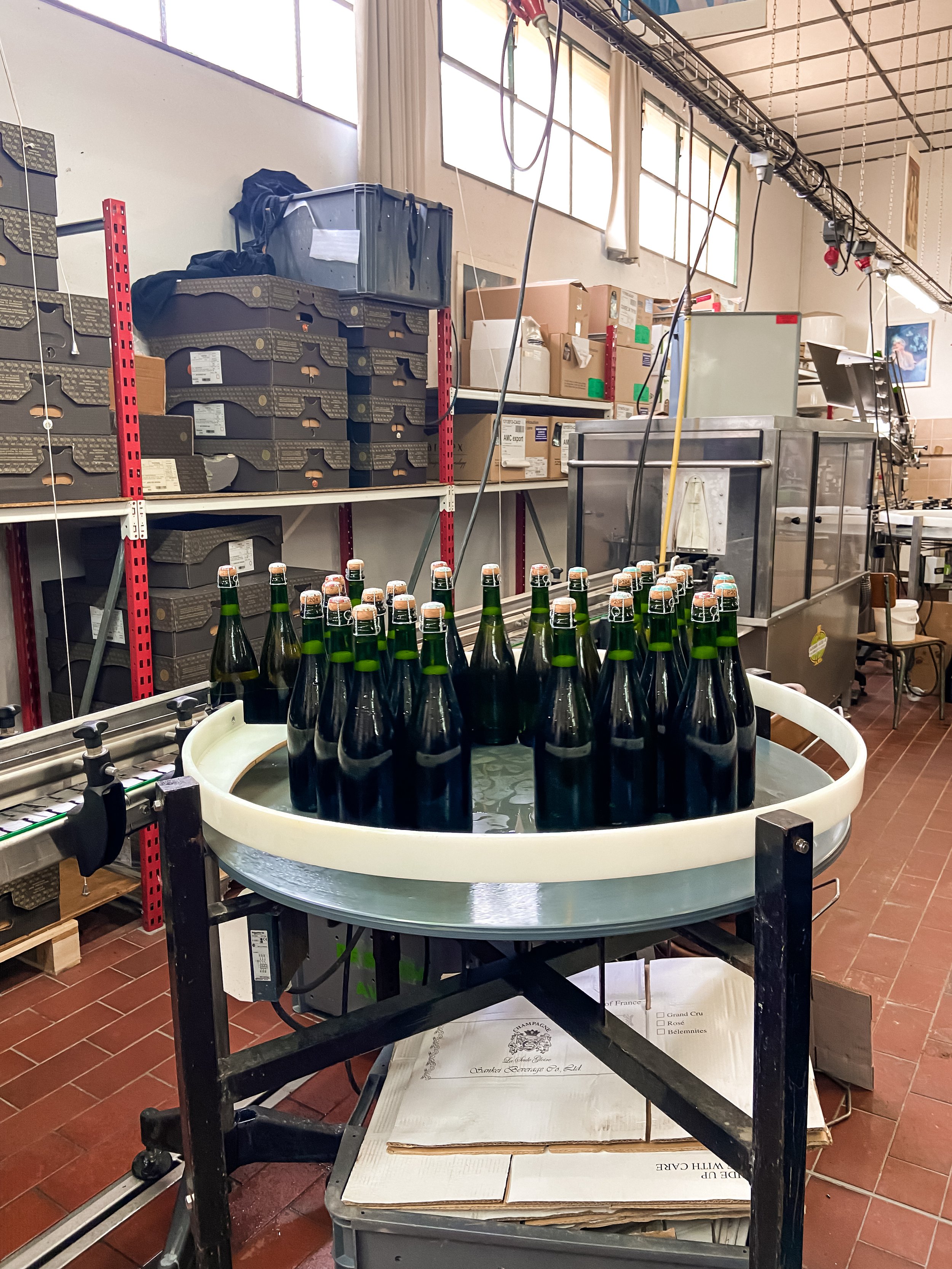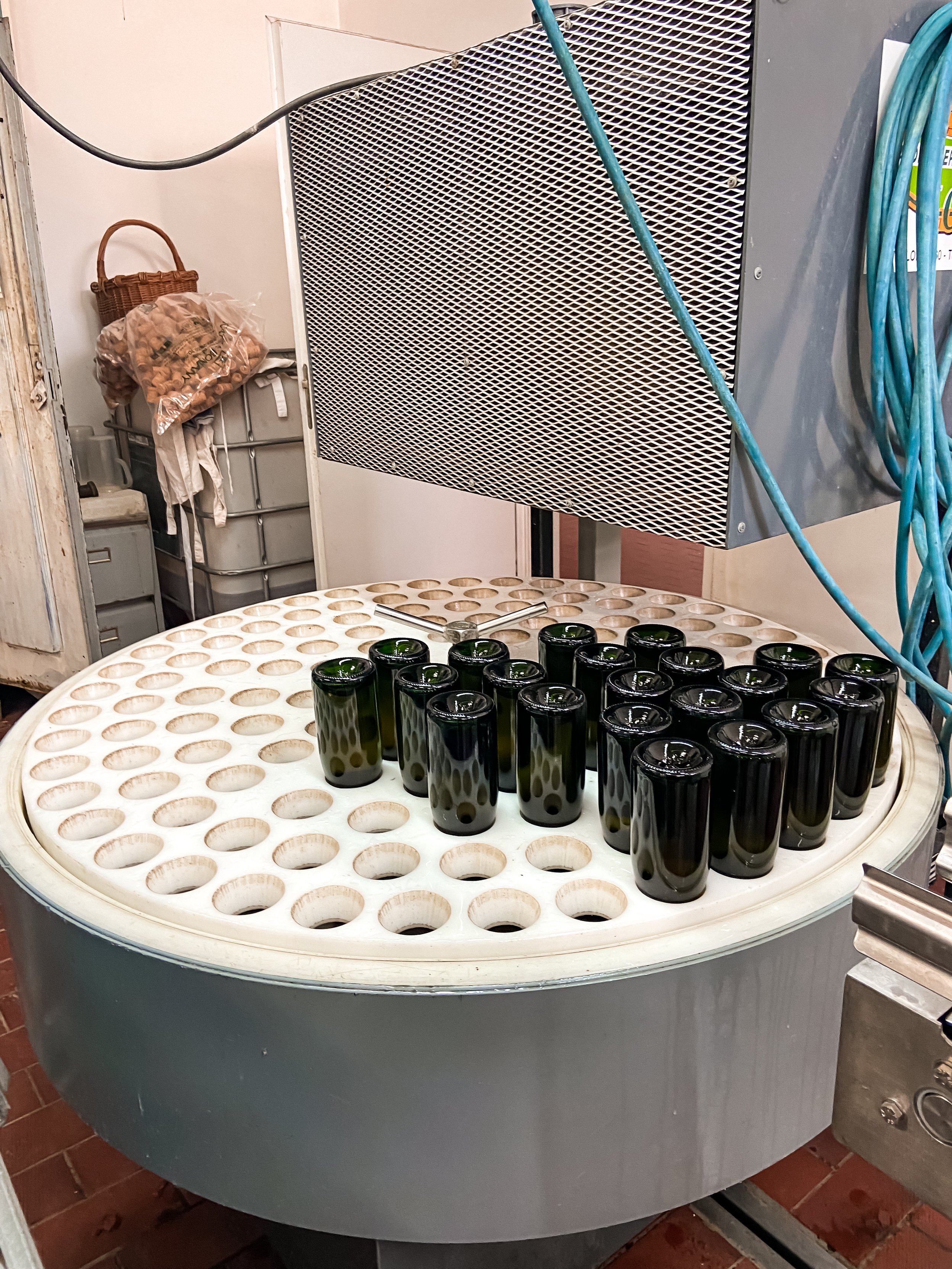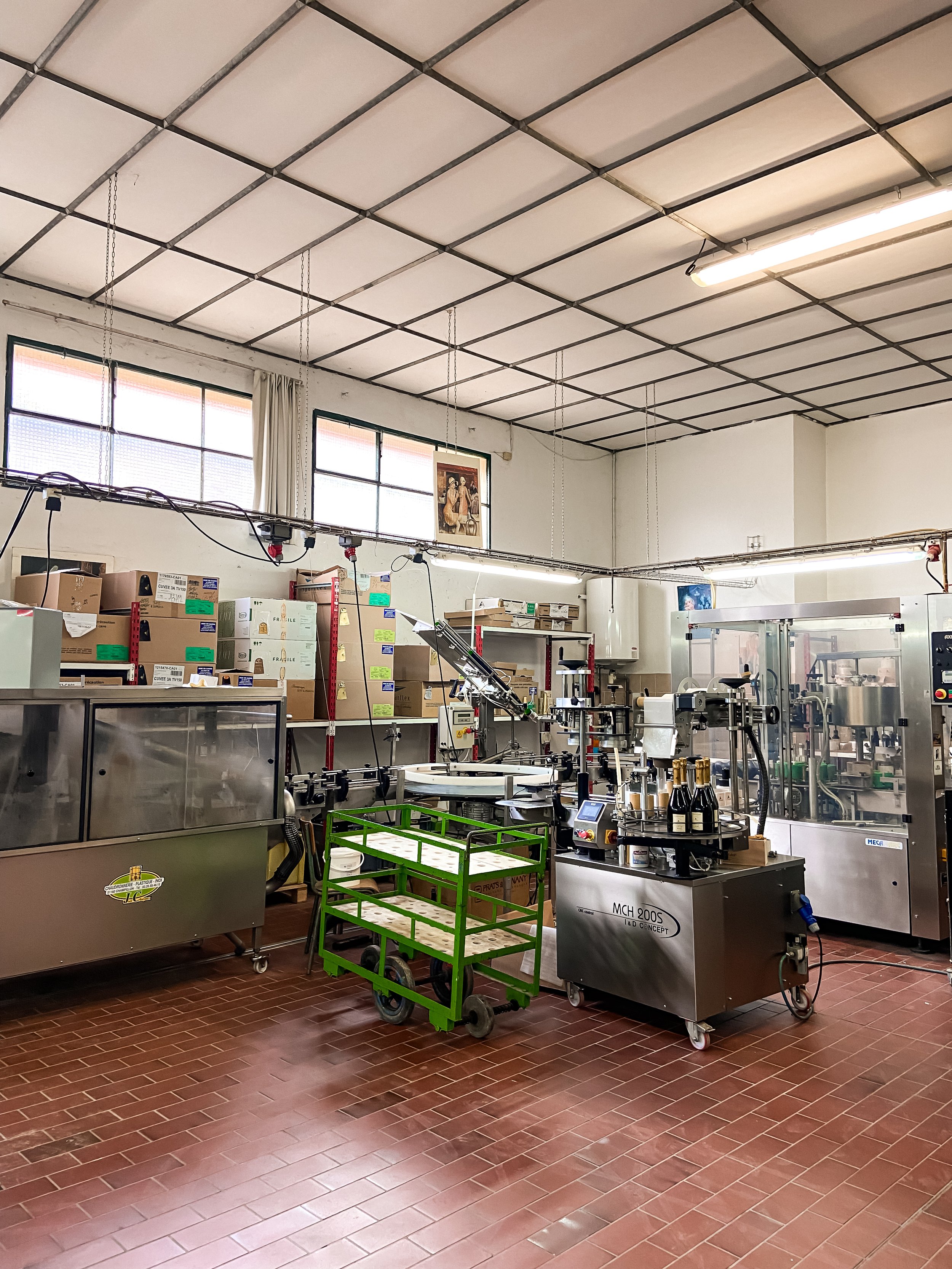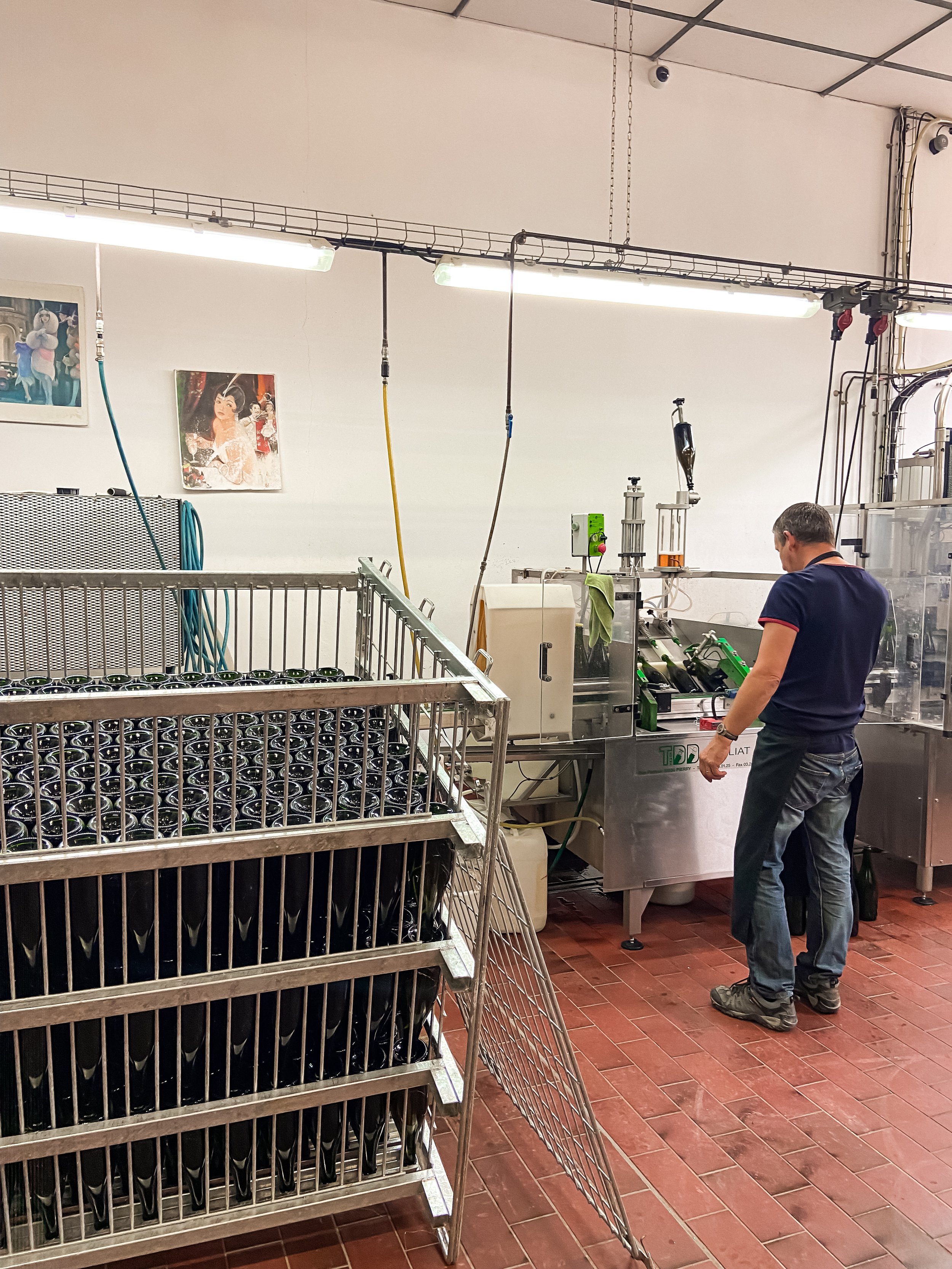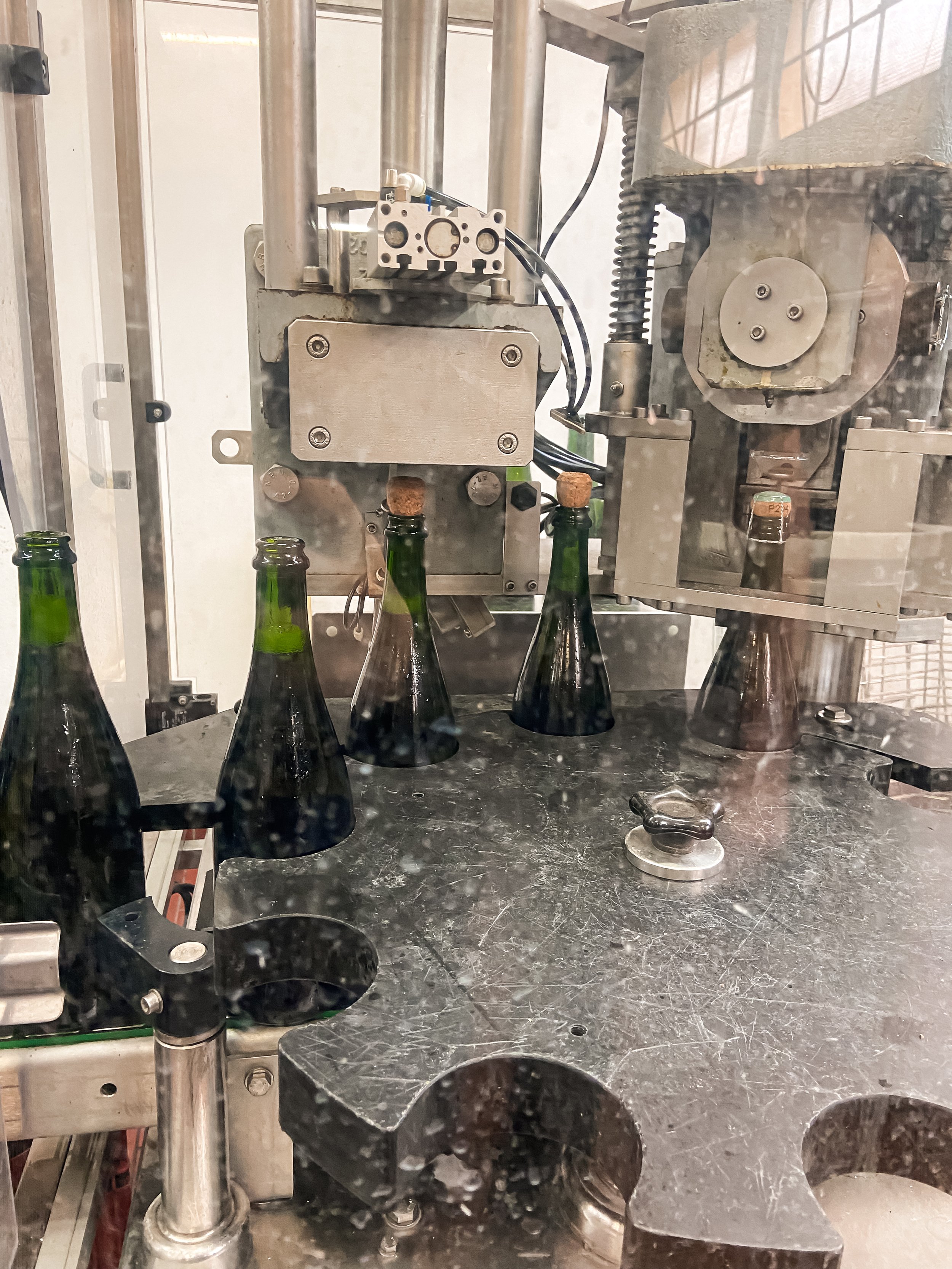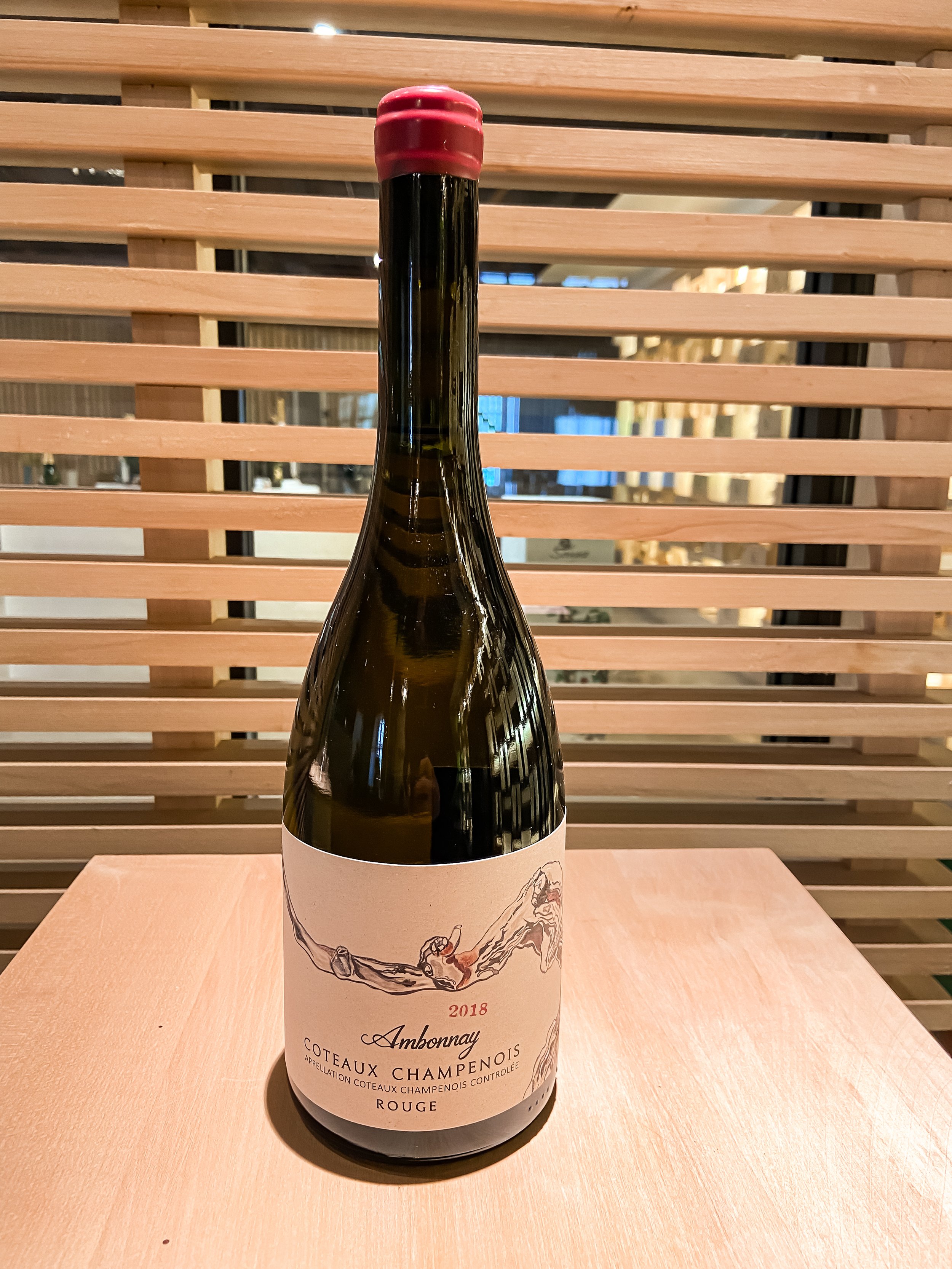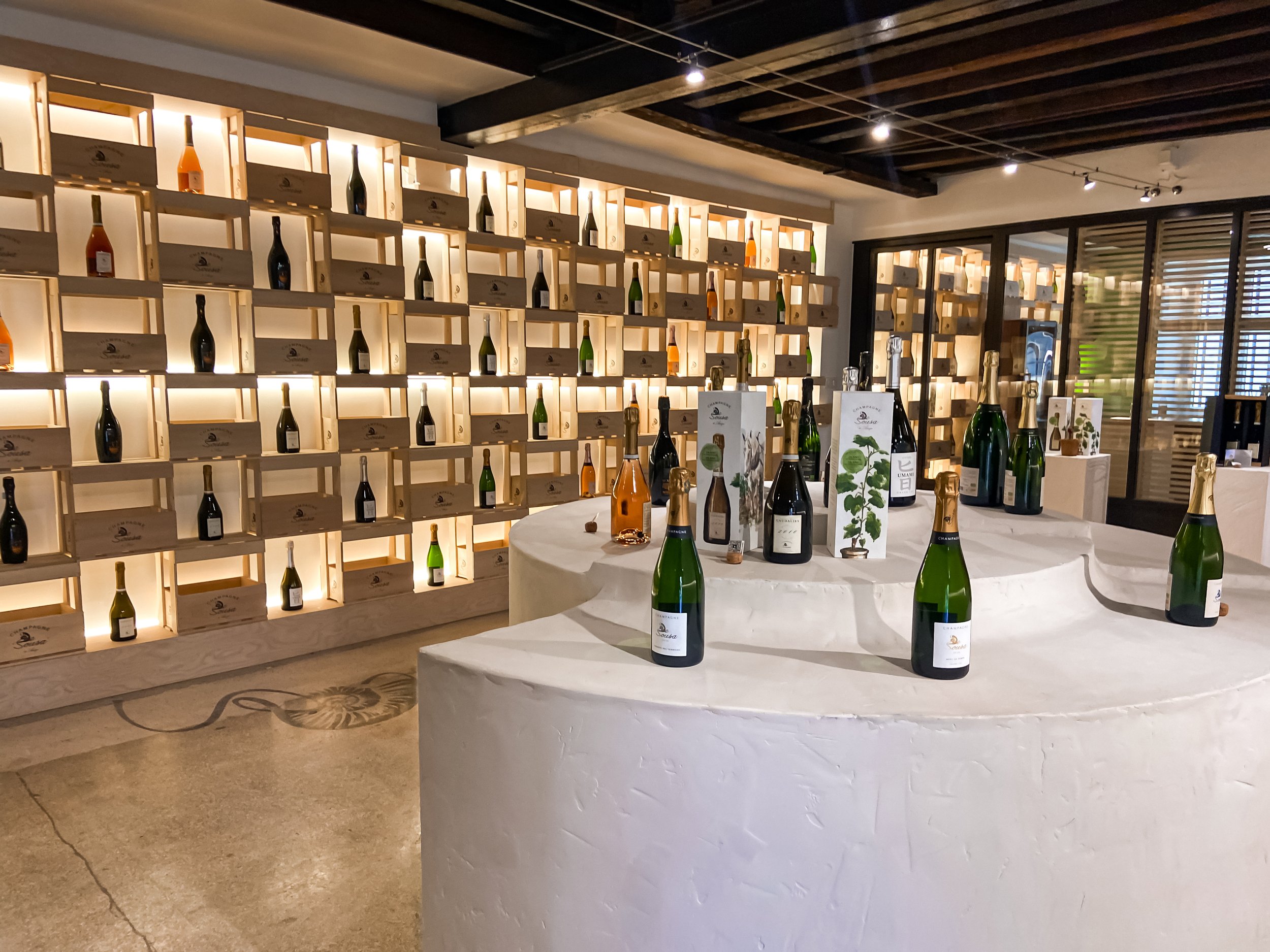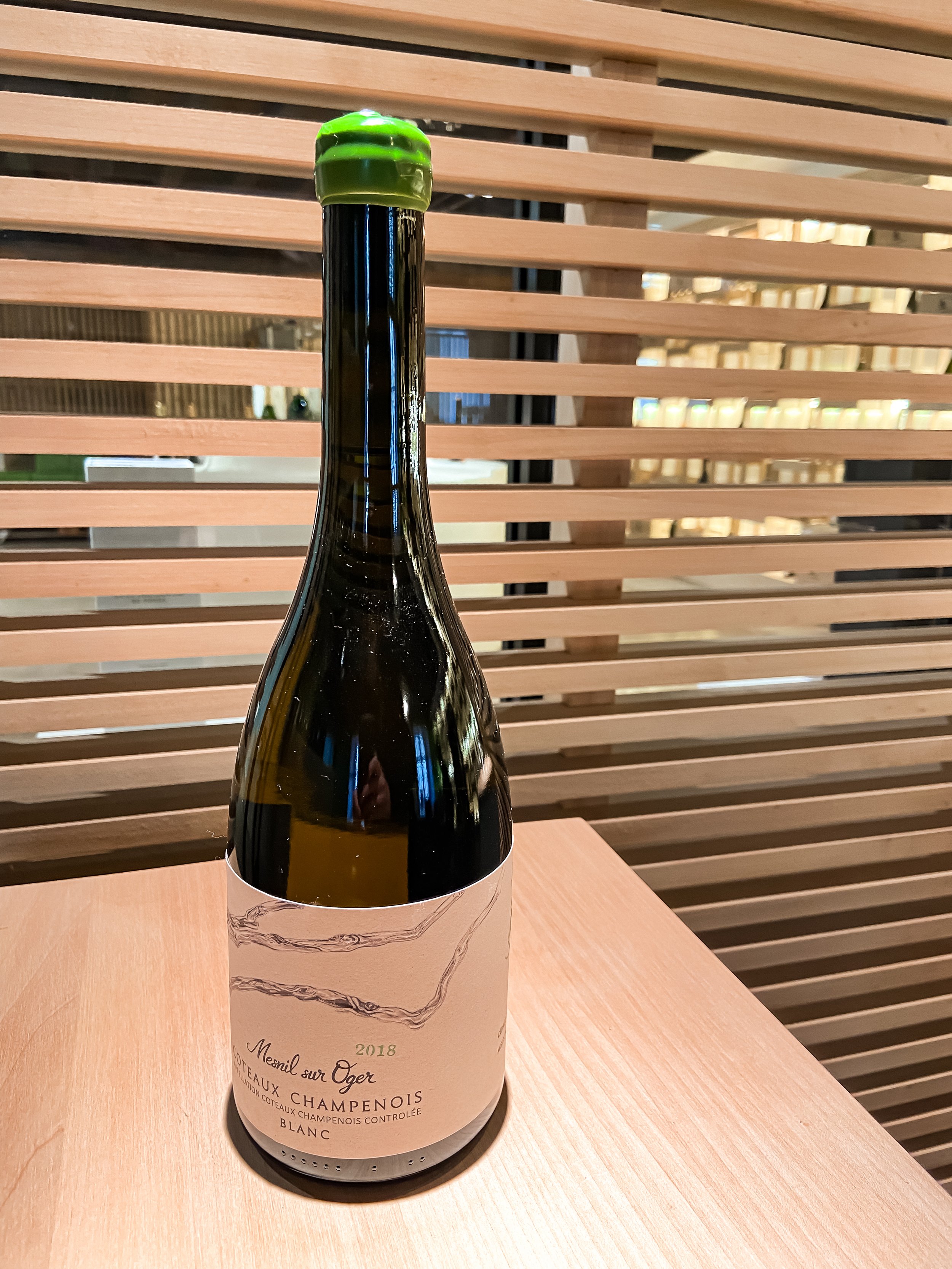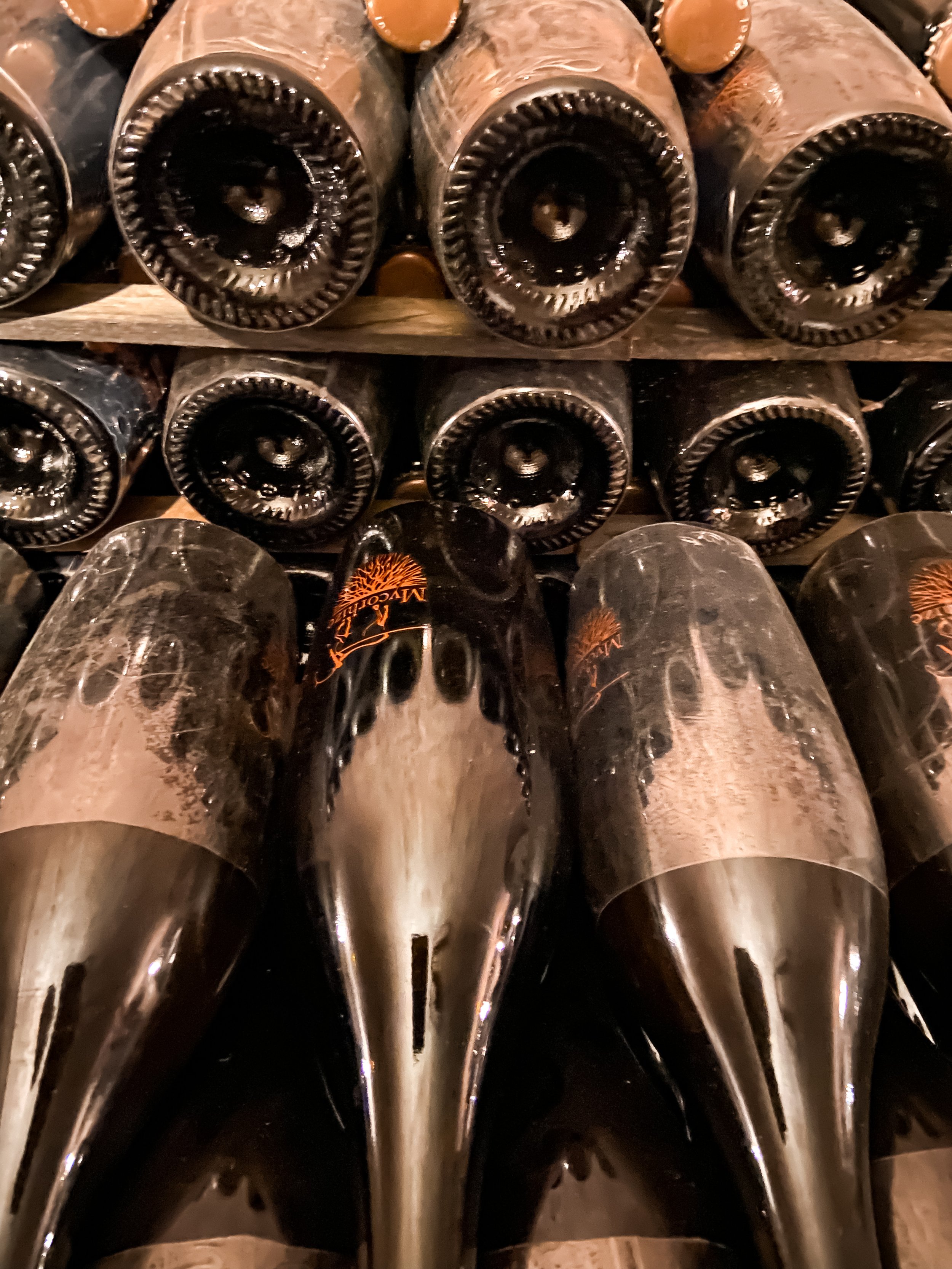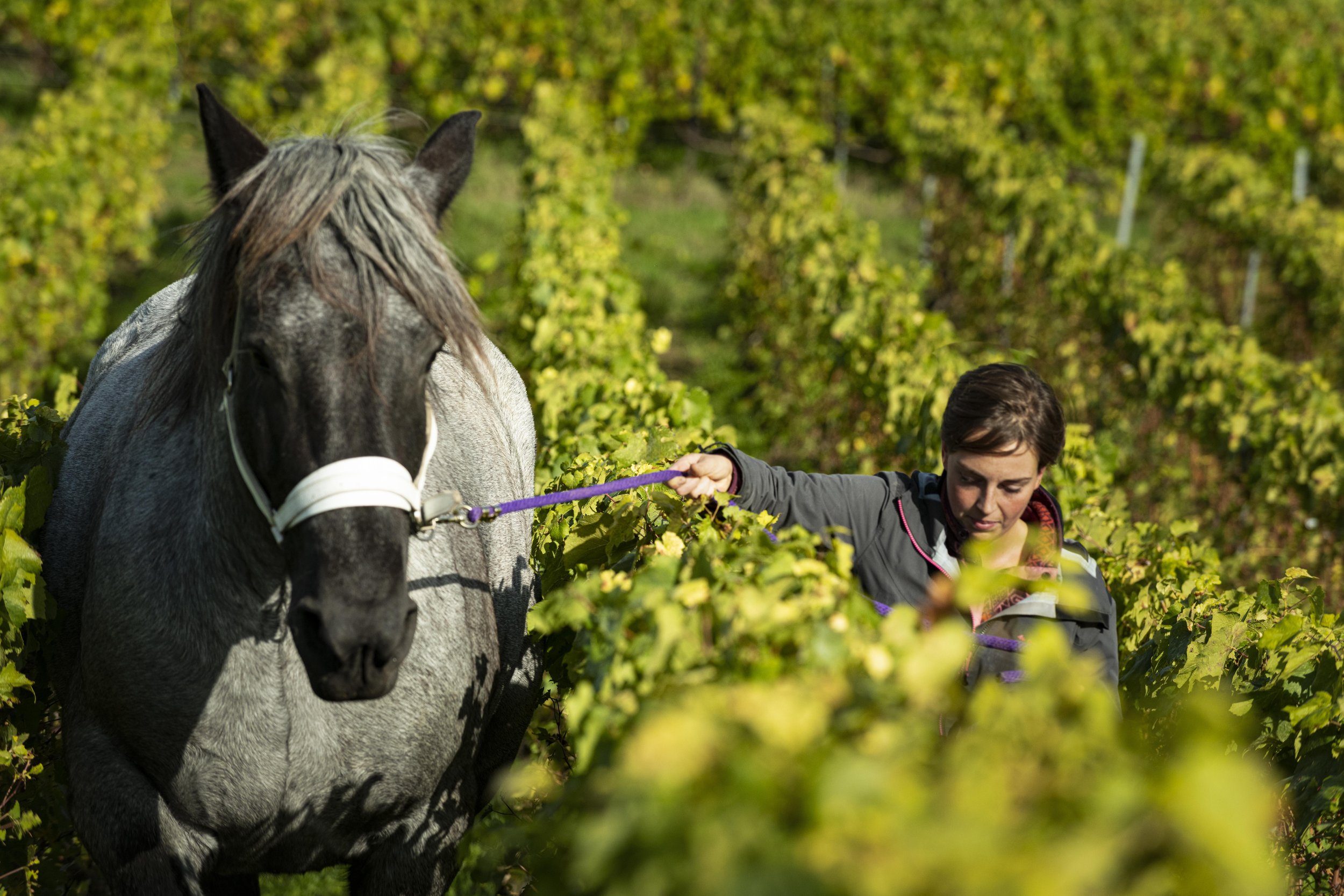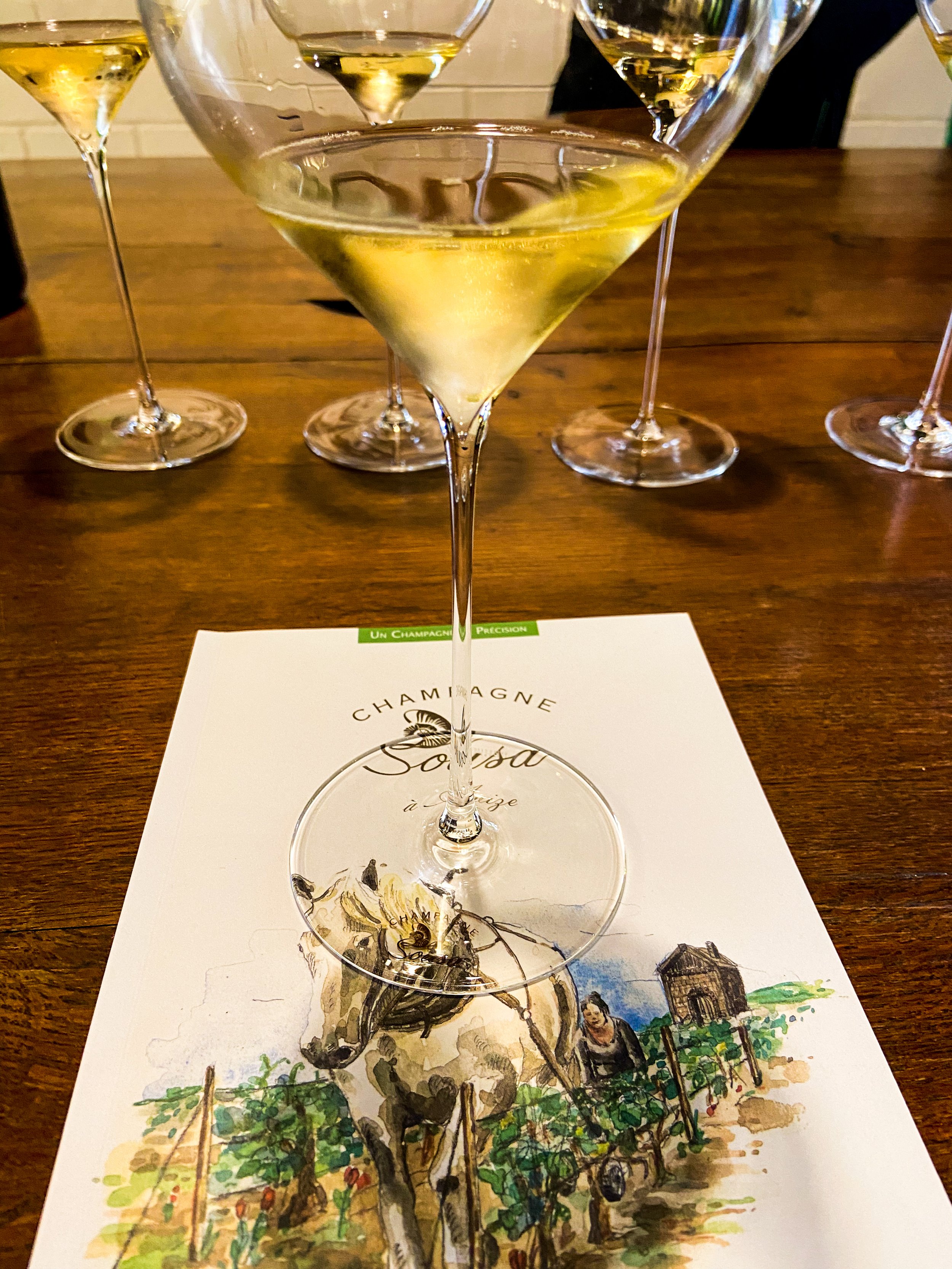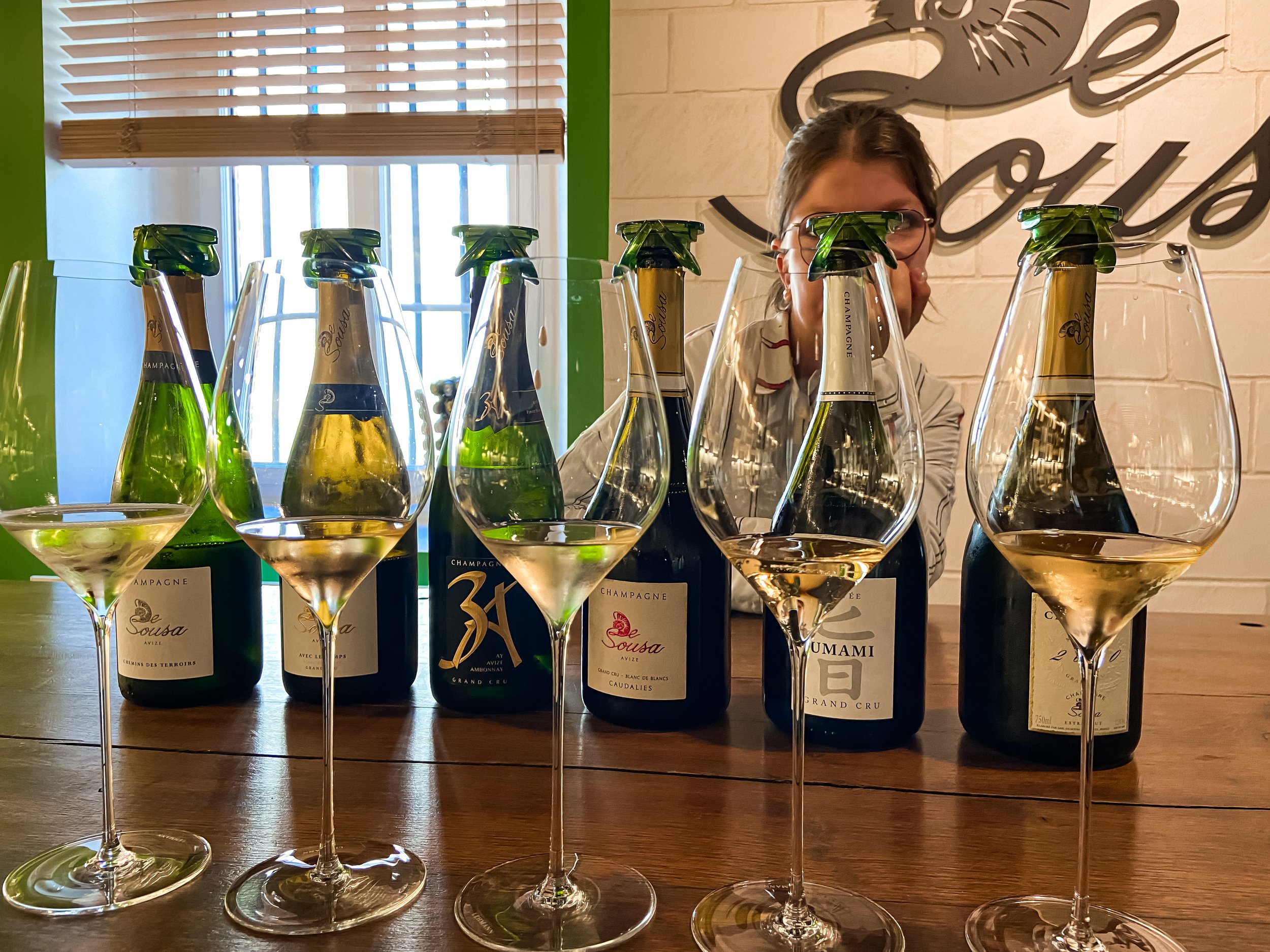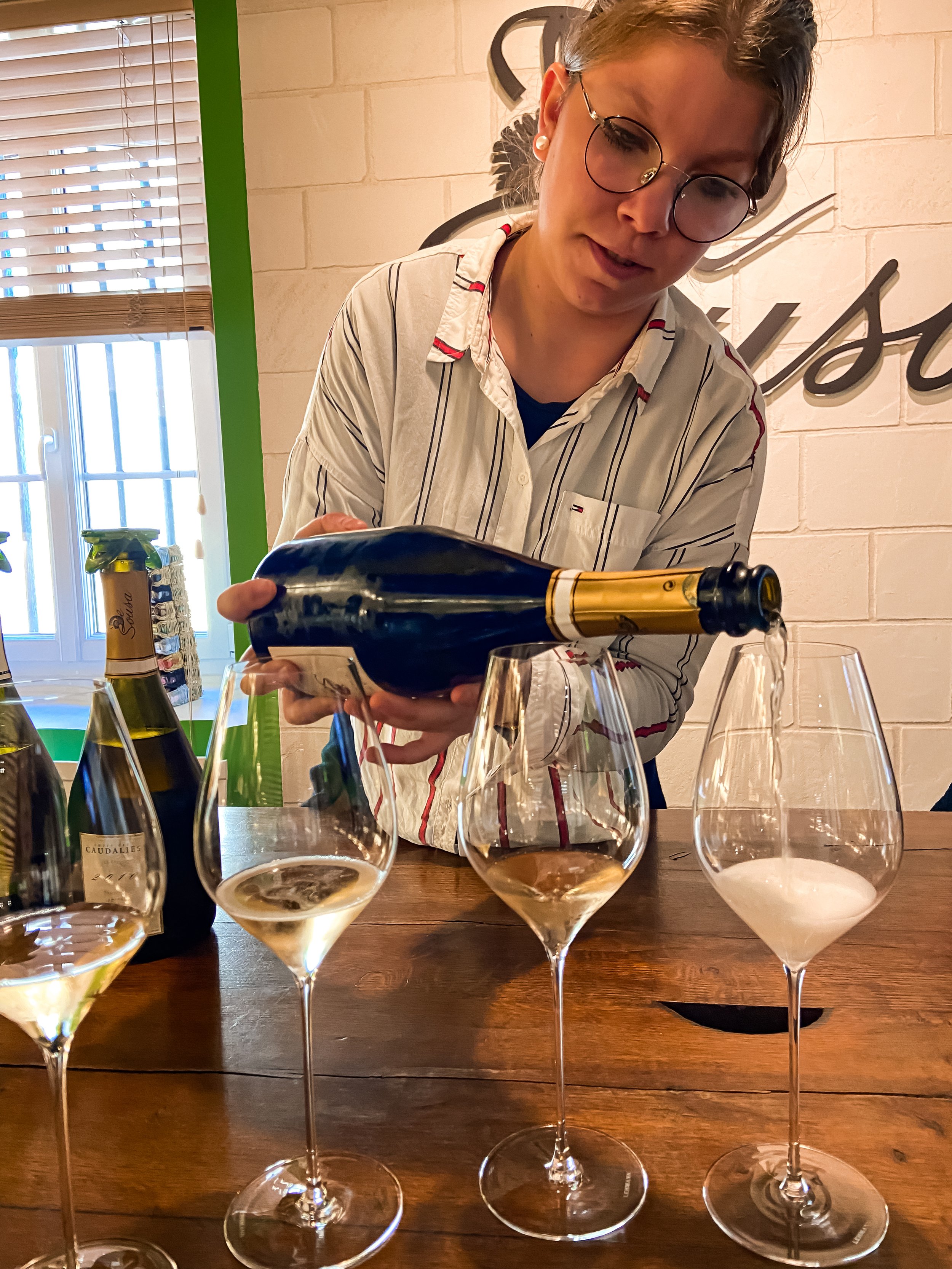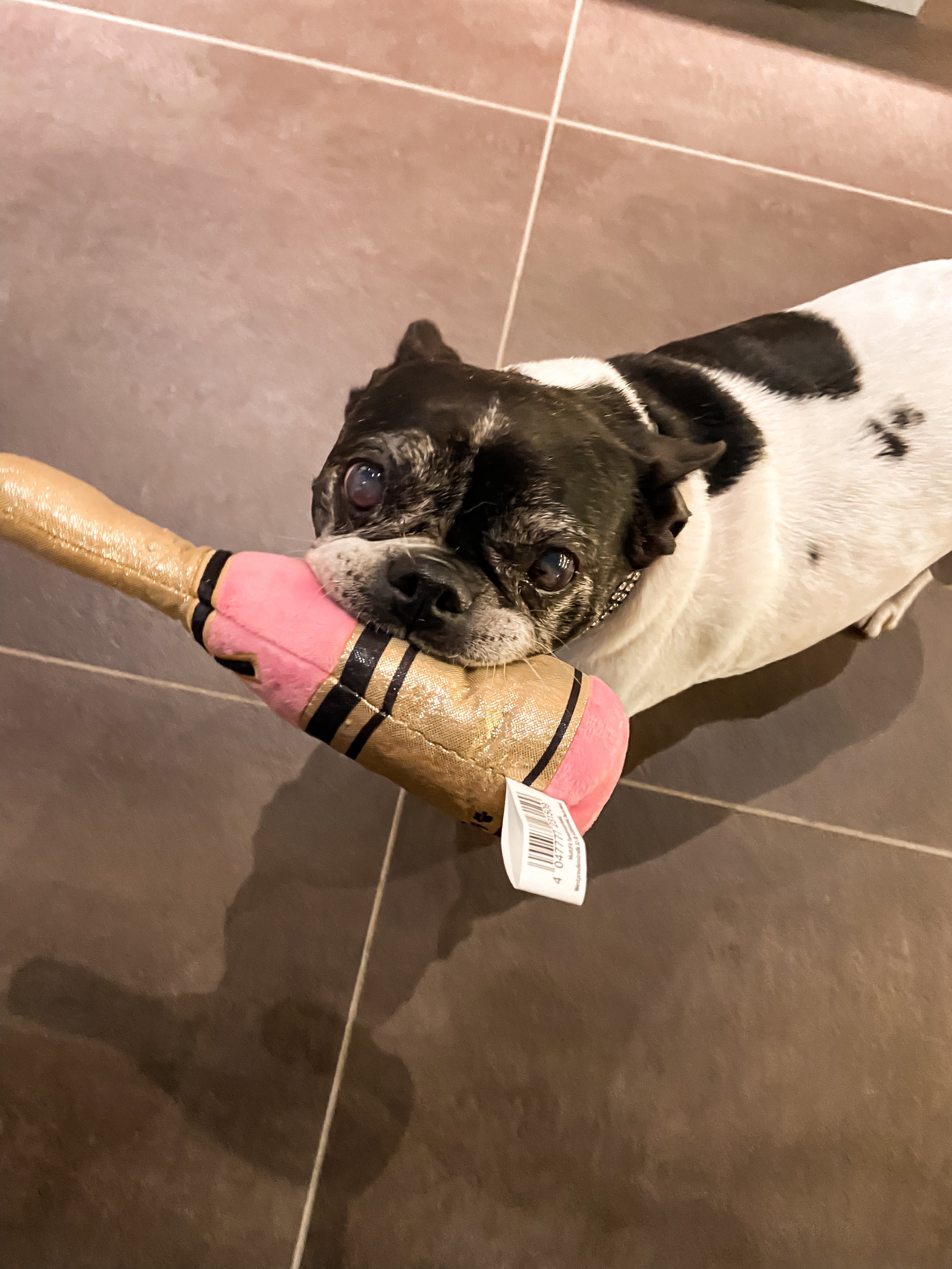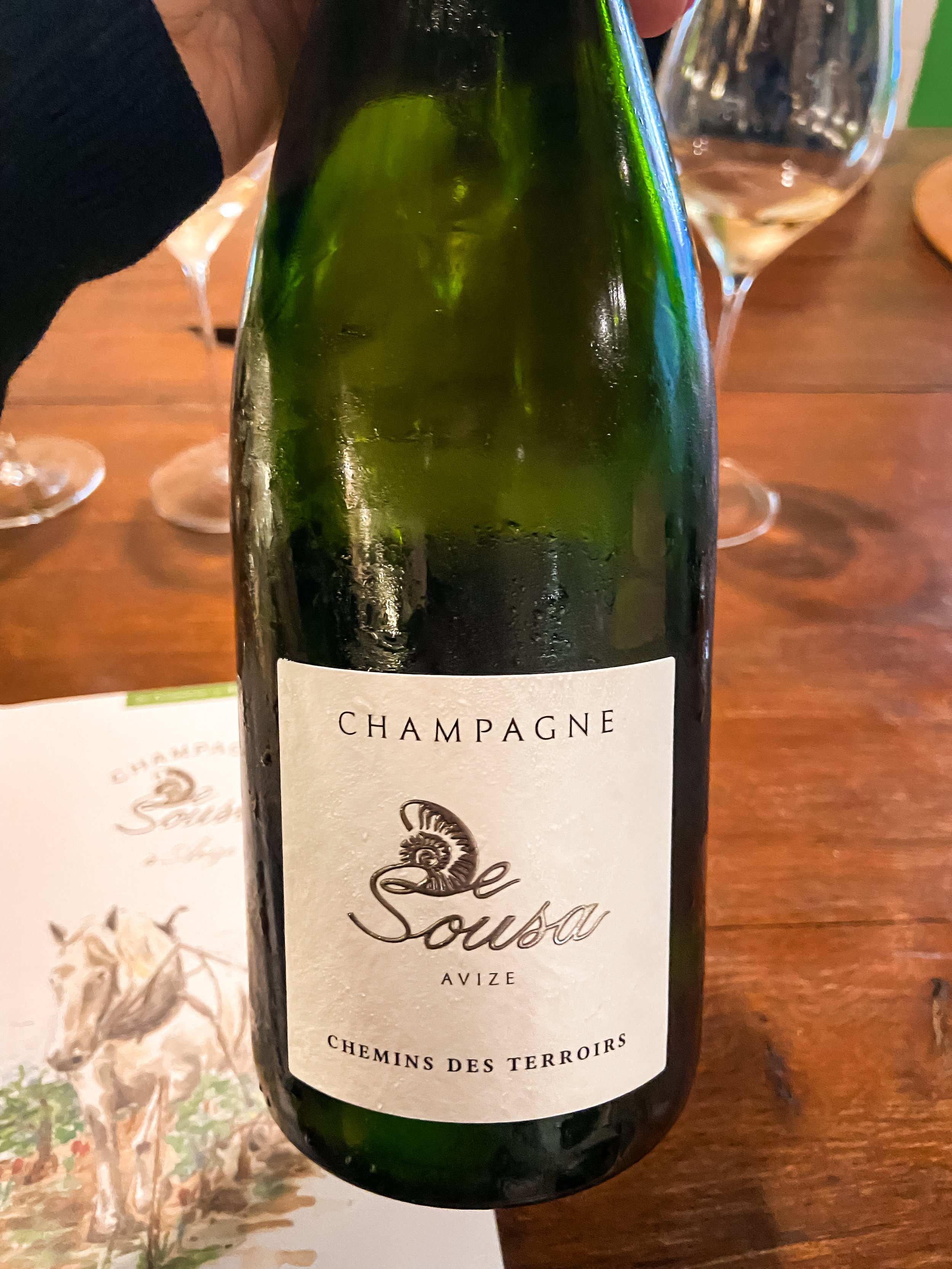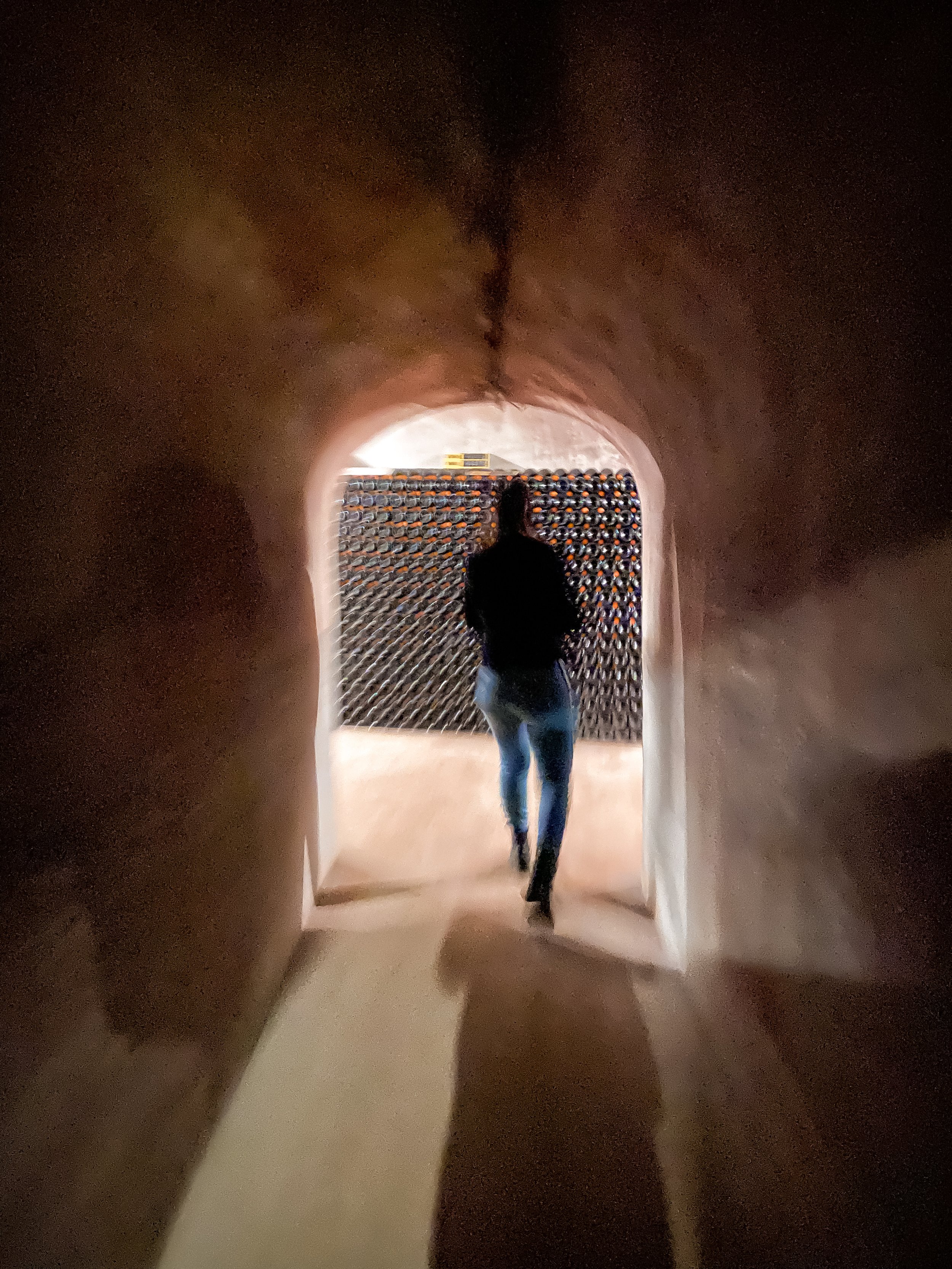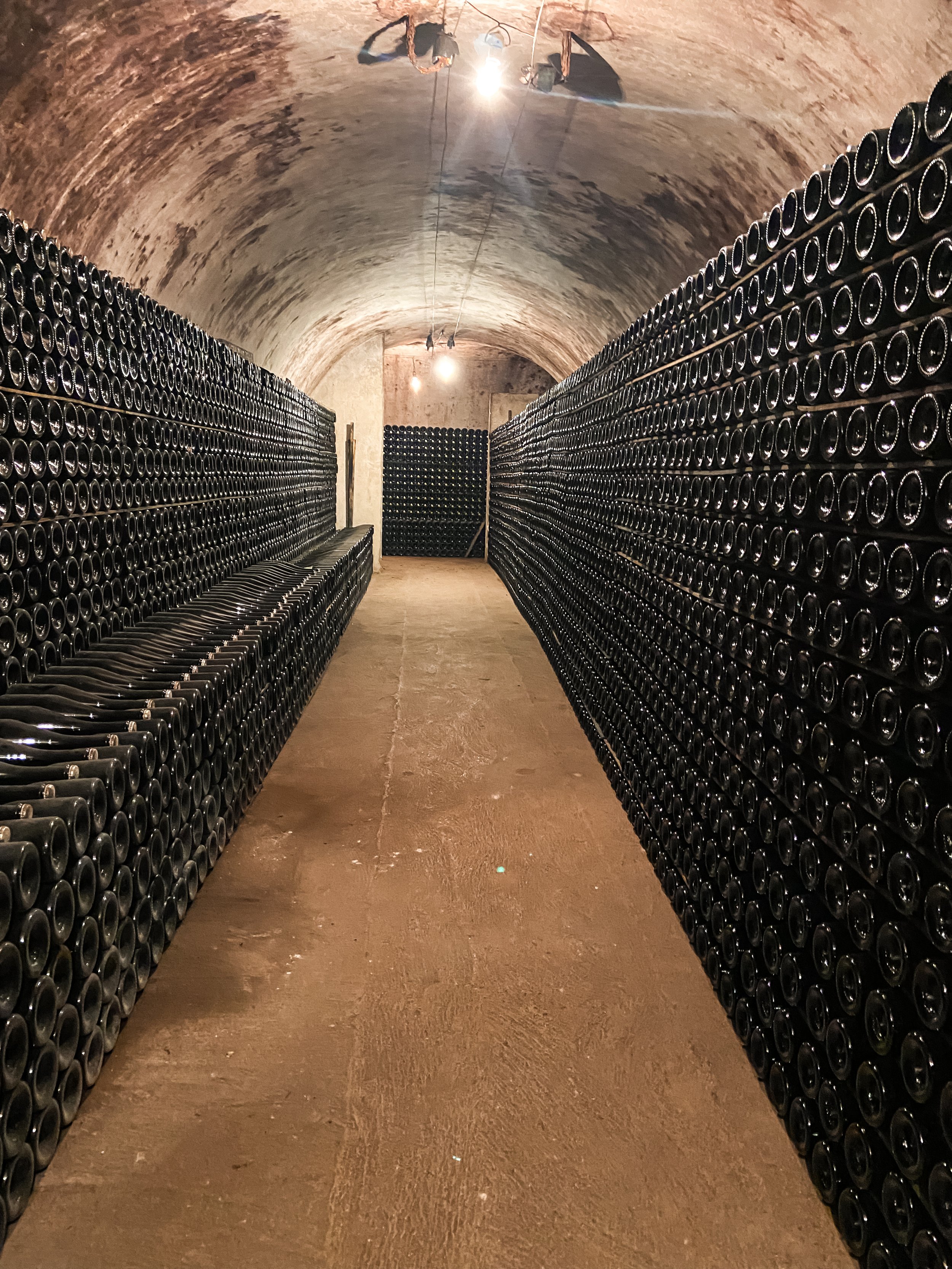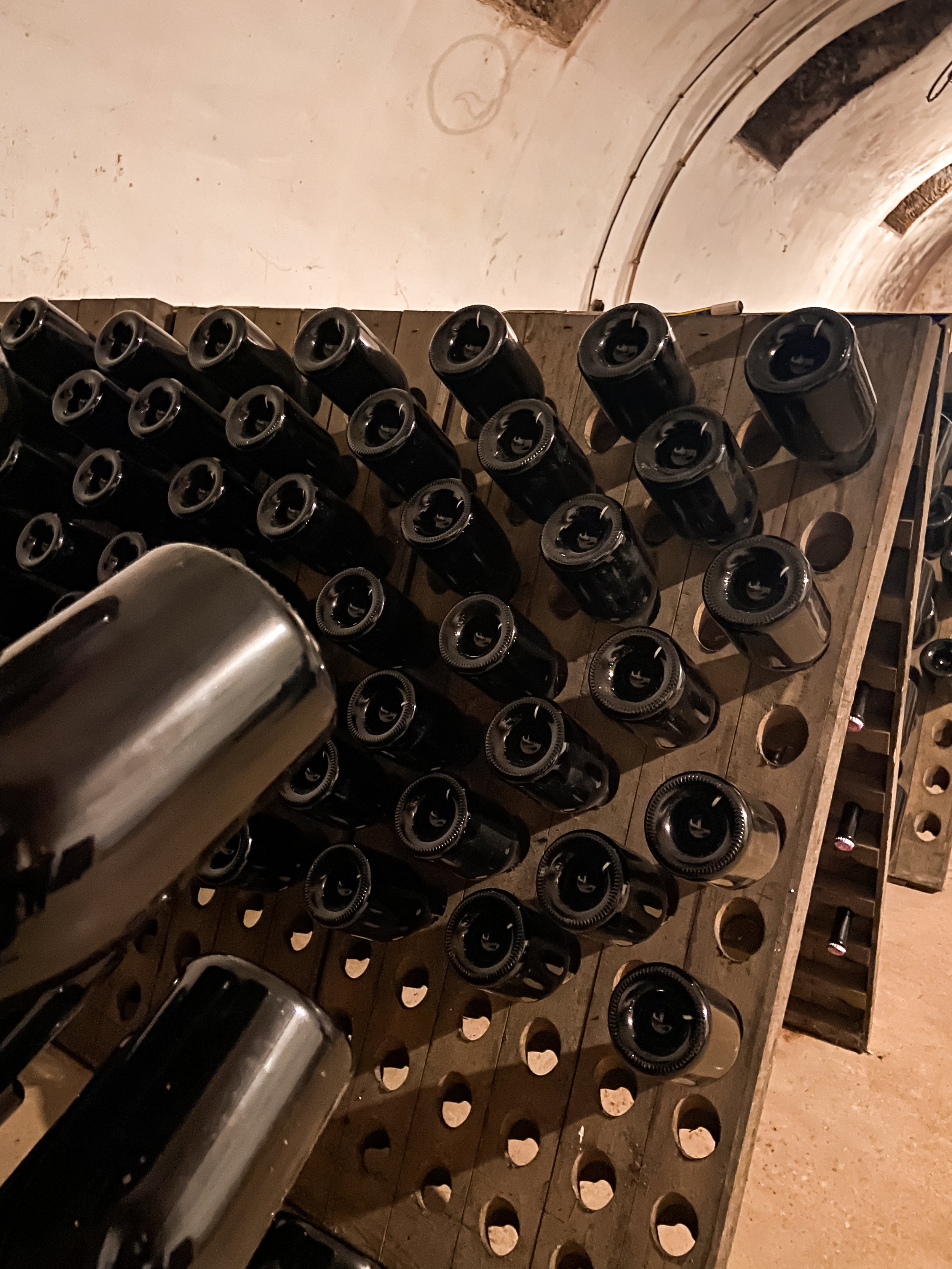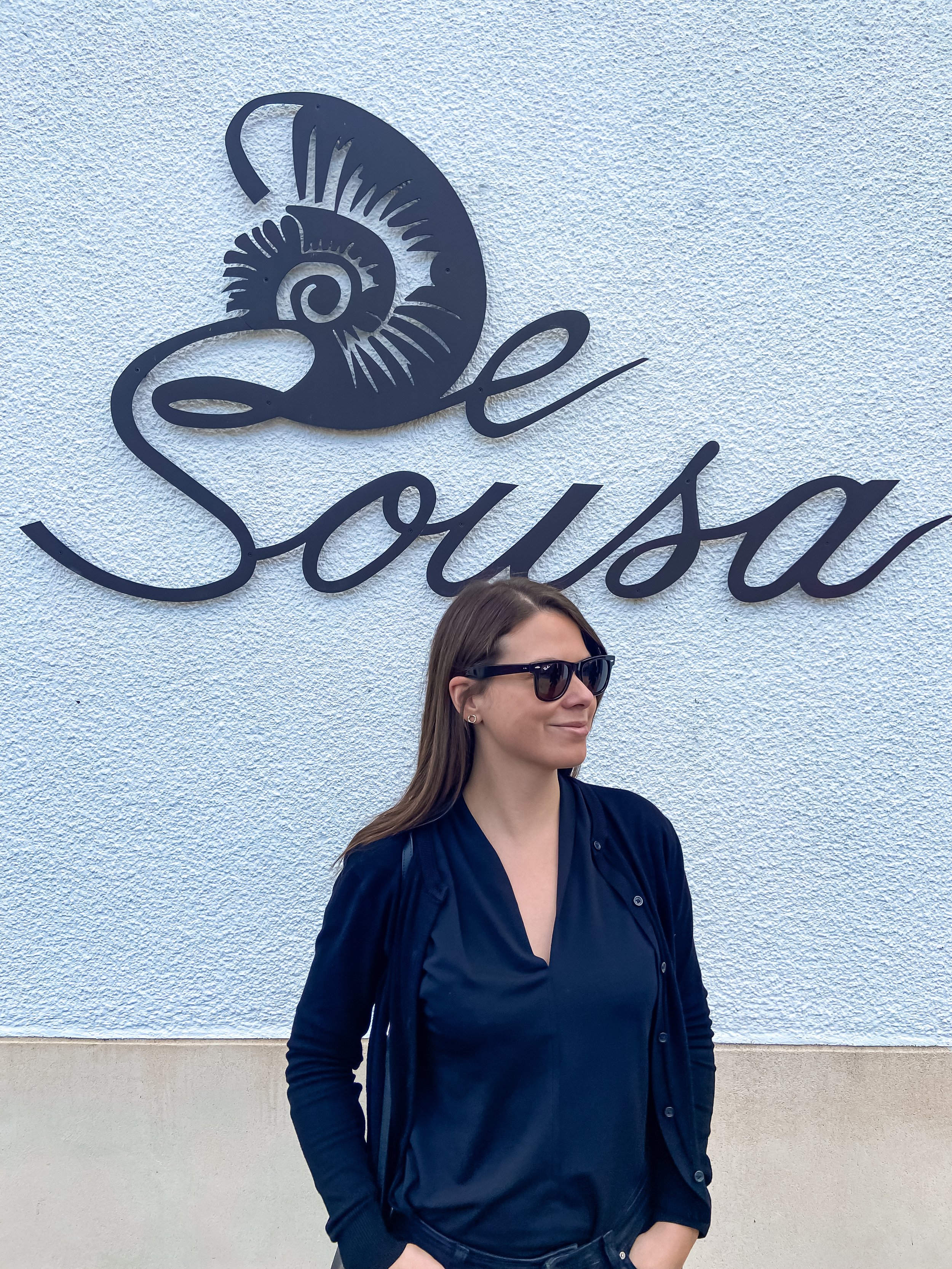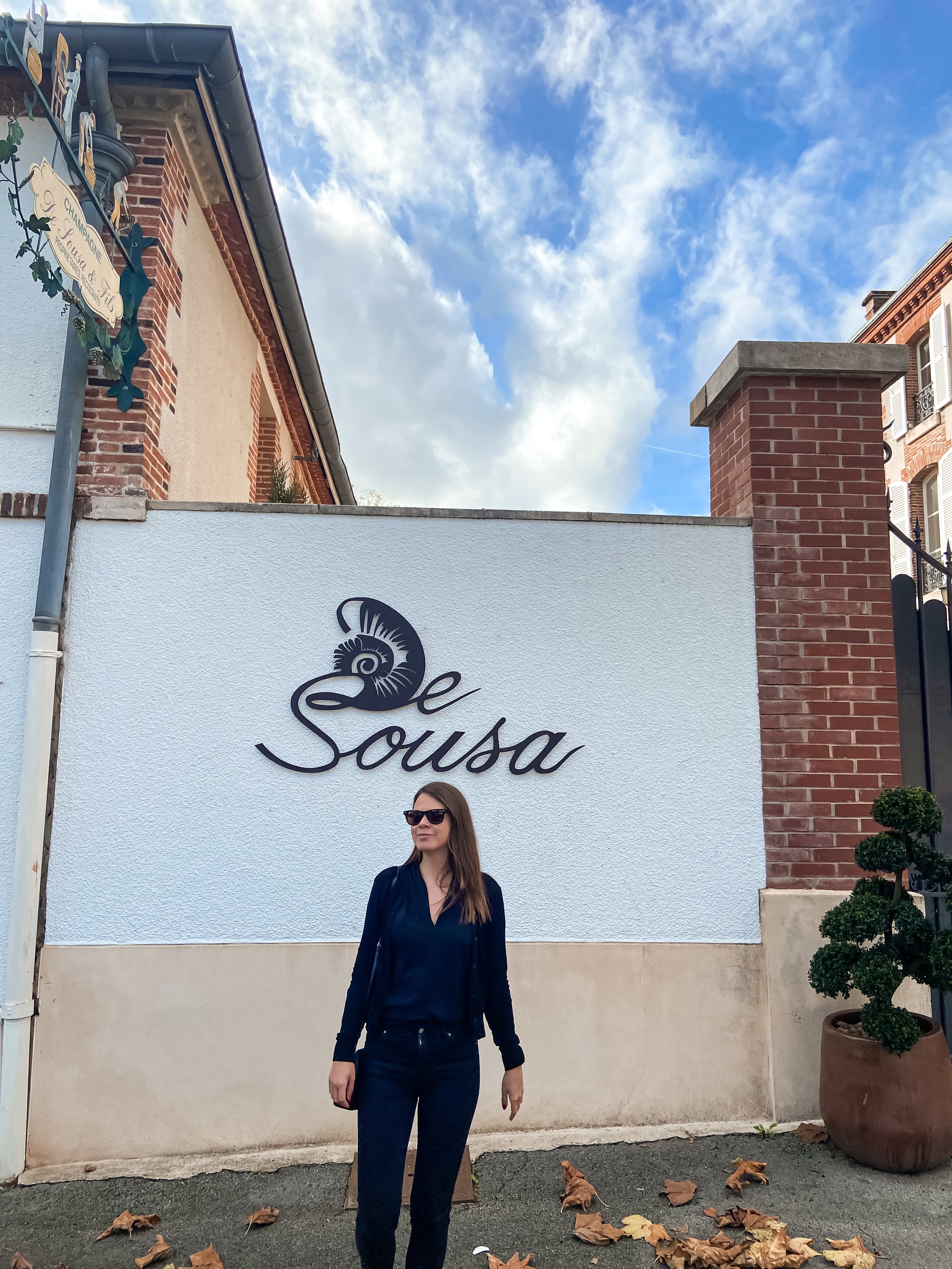Champagne. De Sousa
Champagne stands out as one of the most vibrant and rapidly evolving wine regions globally, with Grower Champagne movement gaining popularity for over the past two decades and emerging as an enticing opportunity for fine wine investment. For three generations, De Sousa family, of Portuguese origins, has cultivated its vineyards on the prestigious Grands Crus terroirs of Avize, Cramant, and Oger in the heart of the revered Côte des Blancs. De Sousa champagnes are distinguished by their robustness, concentration, and a captivating interplay of density and delicate mineral undertones. A unique quality of their winemaking philosophy lies in respect for the soil as a living organism. This is undoubtedly one of the producers to watch.
Portuguese veteran Manuel de Sousa, who fought alongside the Allies in France during World War I, made his way back to France, eventually settling in the picturesque Avize. It was there that his son, Antoine, married the daughter of local winegrowers, Zoémie Bonville, laying the foundation for Champagne De Sousa in 1950 with 3 hectares of vine. Since 1986, the estate has been under the steadfast guidance of Erick de Sousa, with unwavering support from his daughters Charlotte and Julie, and his son Valentin, who managed their first harvest in 2020. Charlotte and her siblings are at the helm of the domaine for the past four years. Charlotte, the eldest of the three siblings, returned to work in the vineyard in 2011 after finishing school and is responsible for sales and marketing.
Source: https://www.champagnedesousa.com/phototheque-champagne-desousa/
A pivotal moment arrived in 1999 when Erick initiated the cultivation of individual vineyard plots according to the principles of biodynamics, progressively expanding this practice with each passing year. Certification as an organic winemaker was achieved in 2010, and in 2011, Erick embarked on the path to biodynamic viticulture, earning the esteemed Demeter certification in 2013. Within the estate's 11 hectares of vineyards, comprising of 42 parcels primarily in Avize and Oger, as well as Cramant, Le Mesnil-sur-Oger, Grauves, Mancy, Mardeuil, Essoyes, Ay, and Ambonnay, a remarkable 60% of the vines are Chardonnay (70% old vines), 30% Pinot Noir and 10% Meunier.
In 2004, Erick de Sousa introduced the Zoémie De Sousa brand, incorporating a portion of grapes sourced from external growers. Nowadays it is easier to be a negociant as the land is unavailable and very expensive, so De Sousa rents four hectares. The rented plots became organic in 2022, and the family takes care of the vineyards they are renting to hold full control over the vines. Charlotte told me that the most important part of the work takes place in the vineyard – “it is the first material we get and also the most important one. The grapes must be of best possible quality”. The cellar is very bright and spacious, with a gentle music playing in the background as yeast are a living organisms and they perform better under the influence of music.
The average production is around 100,000 bottles per vintage, with 70,000-75,000 bottles De Sousa and 30,000 Zoémie De Sousa. The winemaking process involves natural yeast fermentation, and the wines are matured in a blend of stainless steel and, for the top cuvées sourced from old vines since 1995, oak barriques. Furthermore, Erick has also incorporated the use of a wooden egg into the winemaking arsenal. Notably, the wines are spared chaptalization and rigorous filtration, with only minimal sulfur additions. Malolactic fermentation is neither encouraged nor blocked. De Sousa prefers a hands-off approach, but it may be omitted in exceptionally hot years like 2003. No filtration, cold stabilization, or fining takes place. The lees aging is between 2.5 years up to 10 years for the vintage, depending on the quality of the wine and is subject to constant tasting by the family.
During my visit I also had the chance to have a look at the disgorgement area and watch the disgorgement process visible in the video above.
De Sousa maintains three perpetual reserves, including the Cuvée des Caudalies initiated in 1995, 3A, and Mycorhize. To ensure transparency, each champagne is accompanied by detailed information on the label, including details on the cuvée, base vintage, disgorgement date, and dosage, granting a glimpse into the artistry and precision that define De Sousa's production. The domaine also produces still wines: Coteaux Champenois blanc and rouge from Ambonnay and Le Mesnil-sur-Oger.
De Sousa champagnes are powerful and concentrated with fine mineral notes, thanks to the old vines, the organic fertilizers, and very few chemicals. They are grippy, complex, and precise. Above all, the Cuvée des Caudalies Millésimé, which in vintages such as 2008 or 2005 was one of the iconic wines in the Champagne region. However, even their entry-level quality is very high, and the Réserve Brut is always excellent.
De Sousa started to produce single-village Champagne a few years back. The famous Micoryzhe label is a blend of three plots, but unfortunately, I didn’t get to try it as it was already sold out. It’s 100% Chardonnay from old vines in Avize, 25% reserve wines from a réserve perpétuelle, 100% barrel vinification, and what is special is that it comes from plots worked with a horse.
Source: https://www.champagnedesousa.com/phototheque-champagne-desousa/
The vineyard is a living organism, and working it with a horse is more gentle and leads to less compacted soil. The more compacted the soils are, the less the vine can develop its roots, and the quality of champagne is linked to the depth to which its roots can delve into the subsoil, sourcing essential nutrients for their growth. Mycorrhizae, the product of a harmonious partnership between fungi and plant roots, also plays a pivotal role in this process. The key objective is to foster a rich diversity of microorganisms within the soil through environmentally-conscious practices like biodynamic methods and soil aeration. The De Sousa family has a profound respect for the vitality of the soil.
During my visit to De Sousa, I tasted six labels, and if you take a moment to look at the photo, you will see the different bottle shapes. The more robust the bottle, the more prestigious the label is from De Sousa. There is great label variety in the line-up, and labels have their own personality.
De Sousa Chemins des Terroirs Champagne Grand Cru 'Avize' NV (50% Chardonnay, 30% Pinot Noir and 20% Meunier, dosage 7g/l, base vintage 2018)
Chemins de Terroirs and Avec les Temps are both labels from the rented vineyards. An entry-level champagne that is easy to enjoy. The freshness of Chardonnay, body, and fruit notes of Pinot Noir and Meunier perfectly balance each other. This is the only bottle in the De Sousa’s lineup where three grape varieties are blended. In the next year's release, the dosage will be reduced to 5g/l, as climate change allows greater ripeness and higher sugar content in grapes. Disgorged on 4th of May 2021.
De Sousa Avec le Temps Extra Brut Blanc de Blancs Grand Cru NV (100% Chardonnay, dosage 5g/l, base vintage 2018)
Avec les Temps is a blend of Chardonnay from vineyards in organic conversion from four different villages classified as Grand Cru: Avize, Oger, Cramant, and Le Mesnil. Disgorged on the 1st of December 2021, it has spent over 2 years on the lees. Saltiness, freshness, and acidity are perfectly harmonized with exotic fruits, like passion fruit, pineapple, and mango. It’s salty on the palate with great tension and chiseled acidity - very elegant and precise.
De Sousa 3A Grand Cru (50% Chardonnay from Avize, 25% Pinot Noir from Aÿ, 25% Pinot Noir from Ambonnay, from over 50 year old vines, co-fermented, 20% reserve wines, 50% stainless steel, 50% wooden egg)
I had high hopes for the 3A label, about which I have heard many good things. “It’s a chameleon of a wine” – Charlotte told me, “it has enough structure to go well with the food, but at the same time, it is still enjoyable on its own”. It is vinified half in tank and half in barrels, part of it in a wooden egg, which holds around 23,000 liters of wine. Based on the 2018 vintage and disgorged in May 2021, it has spent 3 years on the lees. Orchard fruit, red berry, and floral notes sear from the glass accompanied by the great texture and body on the palate with ripe red fruits aromas. It is a lovely marriage between acidity and fruitiness.
De Sousa Cuvée des Caudalies Blanc de Blancs Grand Cru (100% Chardonnay, from over 60 year old vines, vinification: 100% oak barrels, 15% new oak, dosage 5 gr/l, 50% reserve wines, solera started in 1995 and 50% base vintage 2018)
Cuvée des Caudalies is one of the iconic bottles of De Sousa. All of the vintages since 1995 are added to the perpetual reserve, half of which is taken off each year and filled up with wine of the new vintage. Freshness from the new vintage is combined with the maturity of the reserve wines, and the final wine has a great aging potential. A very elegant nose surprised me with woody and forest floor aromas. On the palate, the wine is concentrated but well-structured and has a creamy texture. Stone fruits and citrus aromas, including lemon peel, grapefruit, and peach, are underlined by salty and mineral notes.
De Sousa Cuvée Umami Grand Cru 2012 (60% Chardonnay and 40% Pinot Noir, from over 60 year old vines, vinification: 100% oak barrels, dosage 3g/l)
Umami label is made only in special vintages and rather warm years. The 2009 and 2012 were the first vintages, and the next on the horizon is 2018, any of those would be a great investment. The idea to make this label came from Eric who got inspired in Japan, which is a key market for de Sousa. Many samples were made before finding what they were looking for – the real fifth taste. It reminded me of Sherry Olorosso, savoury, salty with great complexity and long finish. I found it rather exceptional with the umami sensation coming from the yeast autolysis. To increase umami and create more structure during the fermentation in barrels bâtonnage is carried out 4-5 times instead of just 1-2. When the wine is already in the bottle it is shaken every year to break the amino acid chains to release glutamic acid into the wine, which is a rare technique. Umami Cuvée has evolved aromas of lime, honey, gingerbread, but also raspberry, and cherry. It’s elegant, pure and mineral.
De Sousa Cuvée des Caudalies Grand Cru 2010 (100% Chardonnay, from over 60 year old vines, vinification: 100% oak barrels, dosage 3 gr/l)
It has spent 8 years on the lees before being disgorged on the 15th of October 2019. I found 2010 vintage abundant and rich, with a great aging potential. Intense nuts aromas, especially almonds, mix with butterscotch notes and ripe, yellow fruits like plum and pineapple on the palate. Everything is underpinned by honey and ginger notes. It would go great with an intense, aged cheese.
Later we talked with Charlotte about changes that took place in the Champagne region during the last 30 years. “When my grandfather commenced with the harvest it used to be in October. Wine grapes are an autumn fruit normally, but in 50 years ripening speed up by approximately one month. The harvest is currently around the beginning of September. When my grandfather was working in the vineyards it was usually cold, the acidity was very high and fruit ripeness was a big problem. Nowadays during the harvest the season is warmer and the grapes are riper, but then every year is different. The extremes are very powerful and are greatly exacerbated” said Charlotte. Spring frost, which is the main hazard for the wines in the Champagne region was no problem in 2018, in 2019 a bit, 2021 was very difficult and in 2022 there were no spring frost.
Concerning climate change Charlotte told me that the hotter years result in more and more wines in the range of extra brut or brut nature. The grapes are more ripe and healthy with higher sugar content. The age of the vine is very important. If vines are old the root system is well established and deep. Thus it can dig deep to find natural source of water even if the weather is very hot and there is little rain. Sadly this is not the case for the young vines and for these the climate change might prove to be more demanding.
Regarding last harvests 2022 was much better than 2021 for De Sousa family. It was a warm year with a very dry summer and not much rain, so they got great quantity and quality. They prefer to harvest late, when the grapes are fully ripe, and in 2022 there was a very low disease pressure, so it was easier to wait. The harvest commenced at the 1st of September and it took 12 days. In contrast many winemakers started already at the last week of August. Avize was last around 8th of September. It is also considerably easier to harvest in Champagne region, because all of the varieties have a similar ripening period. Lately it is very usual to harvest in September, but every year is a bit different. In 2017 harvest started at the end of September and beginning of October, in 2016 in the middle of September. 2021 was a rainy and difficult year and the harvest took place in the middle of September.
De Sousa is at the forefront of the grower Champagne movement. Gerhard Eichelmann, leading German wine critic, who created a system that awards a winery up to five stars, where 5 stars indicate “world class, top international producers”, De Sousa is already at 4,5 stars alongside with Billecart-Salmon, Ulysse Collin, Benoit Lahye, David Leclapart and Salon among others. Evolution and innovation in Champagne are moving at an accelerated pace. Many of grower champagne producers, recognizing that the realities of running a business that lacks scale can be pretty harsh, are gradually expanding production, introducing new wines, and exploring higher price points, same as De Sousa, so don’t wait too long.
